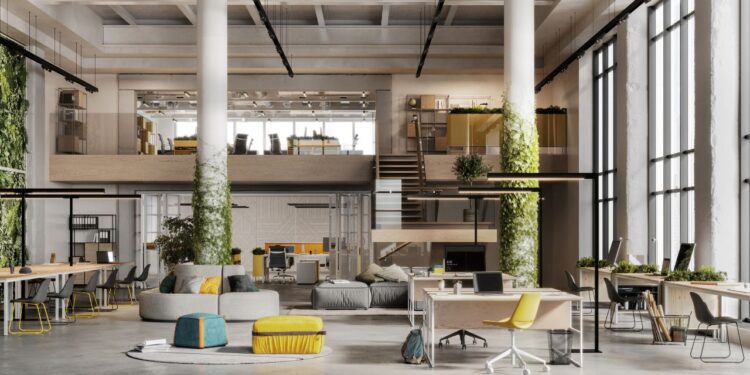Design never stands still. Workspace designers in particular are constantly seeking ways to create spaces that engage their users, to enable a better experience and ultimately, to enhance performance and productivity.
In the post-pandemic world, workers are returning to the office on an as-needed basis. Designers have the job of creating a seamless transition between the office and the remote workplace – which is usually the employee’s home.
One answer to this is the multi-modal workspace.
It combines layers of well-considered, simple technology with pragmatic design solutions to optimize the work experience. The shopping mall is one example. Aside from shopping, you can also pick up groceries, stop for lunch, grab a coffee, and even go to the cinema.
Hallmarks of multi-modal design often include plants and greenery, carefully zoned spaces to improve acoustics, and comfortable ergonomic furnishings – after all, if you’re there to work all day, you need to be comfortable.
Other elements include:
- Deep focus spaces, for quiet work
- ‘Soulful’ spaces, with comfortable, creative furniture and conversation nooks
- Innovation or event spaces
- Formal gathering spaces
- Community spaces
Why is this trend gathering pace?
Among the benefits of multi-modal design, it can help to break down silos and encourage greater collaboration and chance encounters. Employees aren’t generally tied to a desk or a specific area, which allows for more movement around the space.
However, some areas are generally more popular, which can lead to crowding or noisy zones. It’s important to monitor usage and if necessary, educate teams on the benefits of utilizing different areas throughout the day.


 Dr. Gleb Tsipursky – The Office Whisperer
Dr. Gleb Tsipursky – The Office Whisperer Nirit Cohen – WorkFutures
Nirit Cohen – WorkFutures Angela Howard – Culture Expert
Angela Howard – Culture Expert Drew Jones – Design & Innovation
Drew Jones – Design & Innovation Jonathan Price – CRE & Flex Expert
Jonathan Price – CRE & Flex Expert











